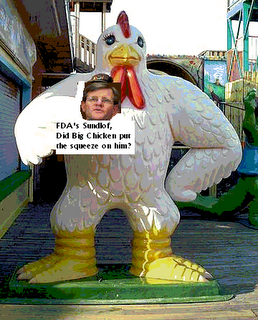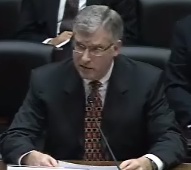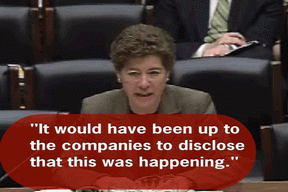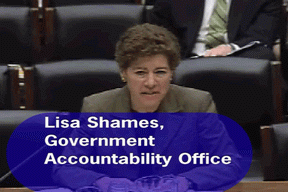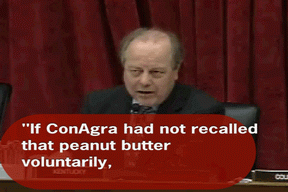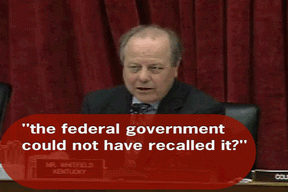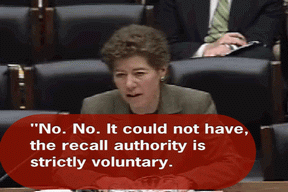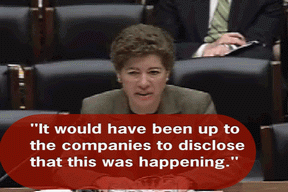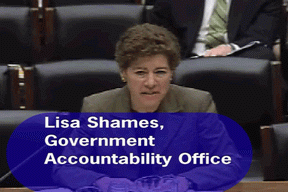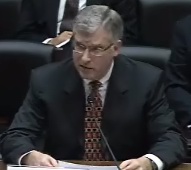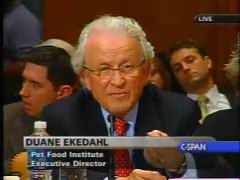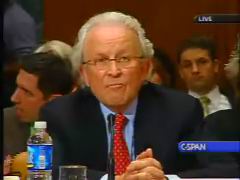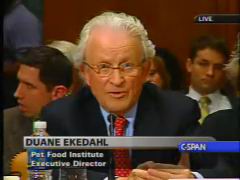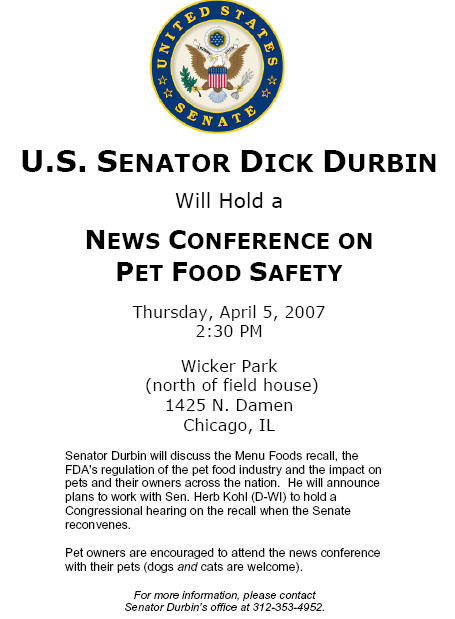For some reason the article below about melamime routinely being added to animal feed in China disappeared. I wrote them a letter to find out why. I'd call, but it's 5:00 AM in Hong Kong. Probably just a technical glitch because of heavy traffic. Just to help them out I've replicated the entire article below. Once they get more capacity up I'll snip it and link to it (don't want to violate any copyrights!)
April 29, 2:45 pm PDT, San Francisco
Press Relations, Asia/Pacific
International Herald Tribune
May-Ling Nam
1201 K Wah Centre
191 Java Road, North Point
Hong Kong
Press Relations, U.S.
Diane C McNulty
229 West 43rd Street
New York
NY 10036-3959
USA
Dear Ms. McNulty and Ms. Nam:
The article titled "Feed sellers in China routinely use protein substitute"
Is currently unavailable on your website.
By David Barboza and Alexei Barrionuevo
Published: April 29, 2007
Story at url:
http://www.iht.com/articles/2007/04/29/news/food.php?page=1
and http://www.iht.com/articles/2007/04/29/news/food.php?page=2
This has disappeared from the International Herald Tribune website as of 1:45 pm Pacific Daylight time in San Francisco. As of 2:45 pm PDT it is still off line. I have spoken to several colleagues around the United States and it is unavailable for them as well. This does not appear to be an isolated problem in my region.
Is there a problem with the story that is being corrected? Is there another source of this important story? There are many people that are very interested in a story about contaminated food being sold to the United States.
Please advise,
Sincerely,
Mr. Spocko
www.spockosbrain.comFor your identification purposes below is the text of the article:
Feed sellers in China routinely use protein substituteThe Shandong Mingshui Great Chemical factory in Zhangqiu, Shandong Province, which manufactures urea, melamine and melamine scrap (Ariana Lindquist for The New York Times)
By David Barboza and Alexei Barrionuevo
Published: April 29, 2007
ZHANGQIU, China: American food safety regulators trying to figure out how an industrial chemical called melamine contaminated so much pet food in the United States might come to this heavily polluted city in Shandong Province in the northern part of the country.
Here at the Shandong Mingshui Great Chemical Group factory, huge boiler vats are turning coal into melamine, which is used to create plastics and fertilizer.
But the leftover melamine scrap, small acorn-sized chunks of white rock, is then being sold to local entrepreneurs, who say they secretly mix a powdered form of the scrap into animal feed to artificially enhance the protein level.
The melamine powder has been dubbed "fake protein" and is used to deceive those who raise animals into thinking they are buying feed that provides higher nutrition value.
"It just saves money," says a manager at an animal feed factory here. "Melamine scrap is added to animal feed to boost the protein level."
The practice is widespread in China. For years animal feed sellers have been able to cheat buyers by blending the powder into feed with little regulatory supervision, according to interviews with melamine scrap traders and agricultural workers here.
But now, melamine is at the center of a massive, multinational pet food recall after it was linked earlier this month to the deaths and injuries of thousands of cats and dogs in the United States and South Africa.
No one knows exactly how melamine - which had not been believed to be particularly toxic - became so fatal in pet food, but its presence in any form of American food is illegal.
U.S. regulators are now headed to China to figure out why pet food ingredients imported from here, including wheat gluten, were contaminated with high levels of the chemical.
The U.S. Food and Drug Administration has banned imports of wheat gluten from China and ordered the recall of over 60 million packages of pet food. And last week, the agency opened a criminal investigation in the case and searched the offices of at least one pet food supplier.
The U.S. Department of Agriculture also stepped in Thursday, ordering more than 6,000 hogs to be quarantined or slaughtered after some of the pet food ingredients laced with melamine were accidentally sent to hog farms in eight states, including California.
Scientists are now trying to determine whether melamine could be harmful to human health.
The huge pet food recall is raising questions in the United States about regulatory controls at a time when food supplies are increasingly being sourced globally. Some experts complain that the FDA is understaffed and underfunded, making it incapable of safeguarding America's food supply.
"They have fewer people inspecting product at the ports than ever before," says Caroline Smith DeWaal, director of food safety for the Center for Science in the Public Interest in Washington. "Until China gets programs in place to verify the safety of their products, they need to be inspected by U.S. inspectors. This open-door policy on food ingredients is an open invitation for an attack on the food supply, either intentional or unintentional."
The pet food case is also putting China's agricultural exports under greater scrutiny because the country's dubious food safety record and history of excessive antibiotic and pesticide use.
In recent years, for instance, China's food safety scandals have involved everything from fake baby milk formulas and soy sauce made from human hair, to instances where cuttlefish were soaked in calligraphy ink to improve their color and eels were fed contraceptive pills to make them grow long and slim.
China's government disputes any suggestion that melamine from the country could have killed pets. But Friday, regulators here banned the use of melamine in vegetable proteins made for export or for use in domestic food supplies.
Yet it is clear from visiting this region of northern China is that for years melamine has been quietly mixed into Chinese animal feed and then sold to unsuspecting farmers as protein-rich pig, poultry and fish feed.
Many animal feed operators advertise on the Internet seeking to purchase melamine scrap. And melamine scrap producers and traders said in recent interviews that they often sell to animal feed makers.
"Many companies buy melamine scrap to make animal feed, such as fish feed," says Ji Denghui, general manager of the Fujian Sanming Dinghui Chemical Company. "I don't know if there's a regulation on it. Probably not. No law or regulation says 'don't do it,' so everyone's doing it. The laws in China are like that, aren't they? If there's no accident, there won't be any regulation."
(Page 2 of 2)
Most local feed companies do not admit that they use melamine. But last Friday here in Zhangqiu, a fast-growing industrial city southeast of Beijing, a pair of animal feed producers explained in great detail how they purchase low-grade wheat, corn, soybean or other proteins and then mix in small portions of nitrogen-rich melamine, whose chemical properties give a bag of animal feed an inflated protein level under standard tests.
Melamine is the new scam of choice, they say, because urea - another nitrogen-rich chemical that works similarly - is illegal for use in pig and poultry feed and can be easily tested for in China as well as the United States.
"If you add it in small quantities, it won't hurt the animals," said one animal feed entrepreneur whose name is being withheld to protect him from prosecution.
The man - who works in a small animal feed operation that consists of a handful of storage and mixing areas - said he has mixed melamine into animal feed for years.
He said he was not currently using melamine, which is actually made from urea. But he then pulled out a plastic bag containing what he said was melamine powder and said he could dye it any color.
Asked whether he could create an animal feed and melamine brew, he said yes, he has access to huge supplies of melamine. Using melamine-spiked pet food ingredient was not a problem, he said, even thought the product would be weak in protein.
"Pets are not like pigs or chickens," he said casually, explaining that cheating them on protein won't matter. "They don't need to grow fast."
The feed seller makes a heftier profit because the substitute melamine scrap is much cheaper than purchasing soy, wheat or corn protein.
"It's true you can make a lot more profit by putting melamine in," said a second animal feed seller here in Zhangqiu. "Melamine will cost you about $1.20 per ton for each protein count whereas real protein costs you about $6, so you can see the difference."
Few people outside of agriculture know about melamine here. The Chinese media, which is strictly censored, has not reported much about melamine or the pet food recall overseas. And no one in agriculture here seems to believe that melamine is particularly harmful to animals or pets in small doses.
A man named Jing, who works in the sales department at the Shandong Mingshui Great Chemical Group, said Friday that melamine scrap prices had been rising but he was not aware of how the company's product was being used.
"We have an auction for melamine scrap every three months," he said. "I haven't heard of it being added to animal feed. It's not for animal feed."
David Barboza reported from Zhangqiu and Alexei Barrionuevo reported from Chicago. Rujun Shen also contributed reporting.
Labels: corporate guidelines, FDA, itchmo, melamine, Menu Foods, rice gluten, Shandong Mingshui Great Chemical, Shandong Province, spocko, tainted pet food, wheat gluten, Zhangqiu
